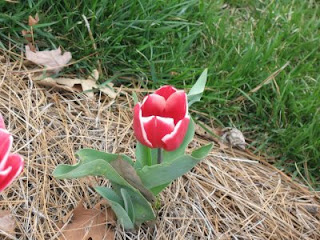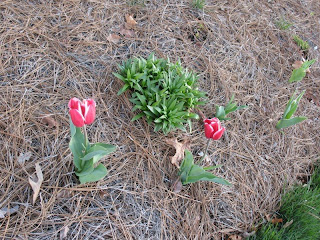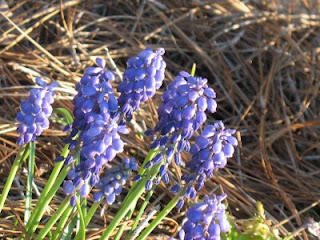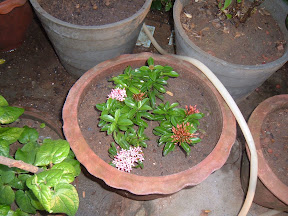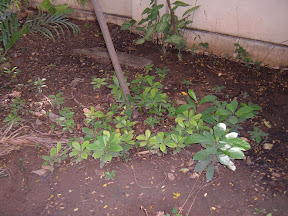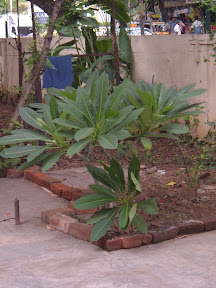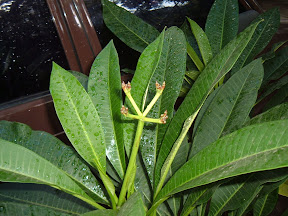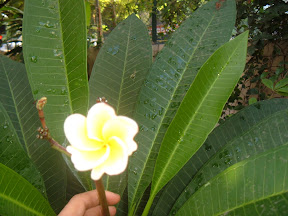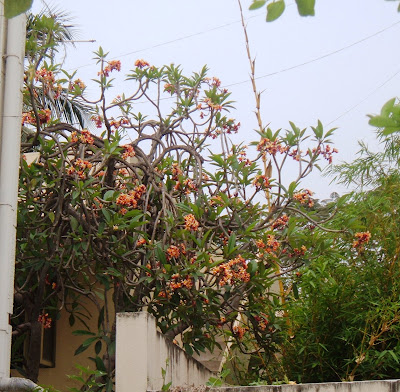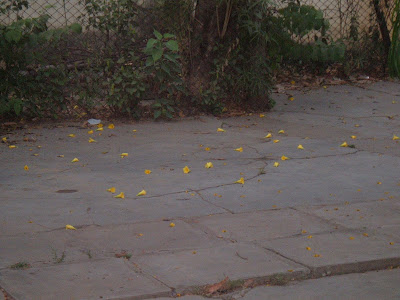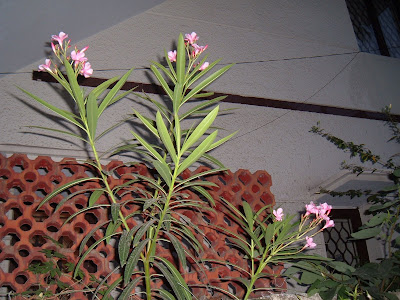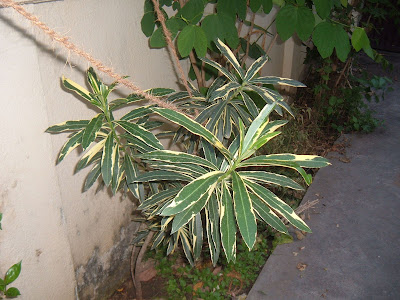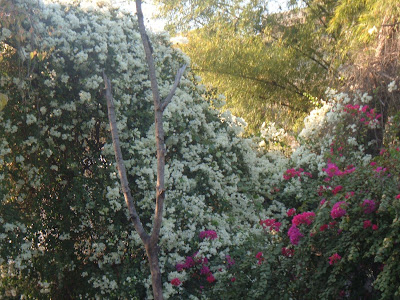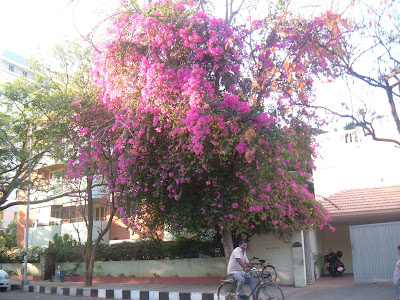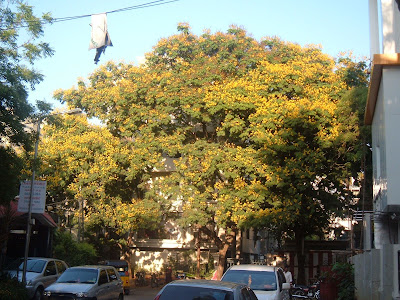A dear aunt of mine has taken to tulips and the pictures she shared with me were just so pretty that they warranted a post on my blog! Of course, i had to do a little bit of googling to add a little to my knowledge on tulips before i could publish this.
So here goes:
The species is perennial, from bulbs and typically there is one flower to each stem, though there are some varieties with up to four flowers per stem... never seen these! The flowers usually have three petals and three sepals. The flowers have six distinct stamens and the stigmas are distinctly three lobed. Now, aunt dearest, since you have the opportunity of taking a closer look at the ones in your garden, tell me if all of this is indeed true?
If i had to hazard a guess as to where the tulip is native to i would go with northern europe, thanks to all the touristy images of Holland that sweep through my mind. However, the tulip is native to southern europe, northern africa and asia from anatolia/iran in the west to china in the east. The centre of diversity of the genus is in the Pamir and Hindu Kush mountains and the steppes of Kazakhstan. Both the flower and its name originated in persian empire. The tulip or lale as it is called in Farsi? is indigenous to Turkey, Iran and Afghanistan.It was probably introduced to northwestern europe during the time of the Ottaman Empire (sixteenth century). The flower has always held a special place in Persian literature and a glass of wine is often likened to a Laleh. The word tulip, which earlier in English appeared in such forms as tulipa or tulipant, entered the language by way of French tulipe and its obsolete form tulipan or by way of Modern Latin tulīpa, from Ottoman Turkish tülbend, "muslin, gauze".
In north america tulip festivals are held every may, the most popular being the one in skagit valley WA, woodburn OR (yes, i have been there and have a million pictures) and in Ottawa Canada.
So with all that said, here are the mesemerizing ones from my aunt's garden in North Carolina:
Included at the very end are the geraniums and the grape hyacinths.


